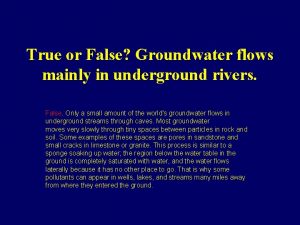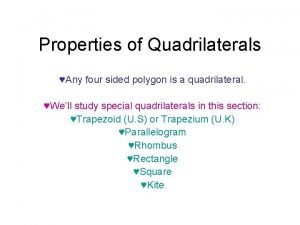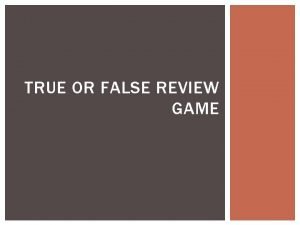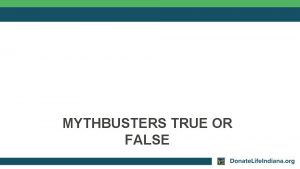Class 27 Question 1 TRUE or FALSE If








- Slides: 8

Class 27: Question 1 TRUE or FALSE: If P is a projection matrix of the form P=A(ATA)-1 AT then P is a symmetric matrix. 1. TRUE 2. FALSE

Class 27: Answer 1: (A) The question is asking whether PT=P and the answer is yes. P=A(ATA)-1 AT PT=[A(ATA) -1 AT]T PT=[AT]T [(ATA)-1]T[A]T PT=A[(ATA)T]-1 AT PT=A[ATA]-1 AT=P

Class 27: Question 2 TRUE or FALSE: If P is a projection matrix of the form P=A(ATA)-1 AT then P is an invertible matrix. 1. TRUE 2. FALSE

Class 26: Answer 2: (B) What’s the determinant of a permutation matrix? Well, if det(A) exists and is not zero then: But since A does not even have to be square (although P always is) P does NOT have to always invertible. The answer is FALSE.

Class 27: Question 3 TRUE or FALSE: If A is a symmetric matrix then A-1=AT. 1. TRUE 2. FALSE

Class 27: Answer 3: (B) If a matrix is symmetric its transpose equals itself. This does not mean its transpose equals its inverse (that’s true for square orthogonal matrices). There’s nothing that says a symmetric matrix even needs to be invertible, i. e.

Class 27: Question 4

Class 27: Answer 4: (E) All four statements are true. Statement 1 follows from Theorem 5. 18. (Symmetric matrices have real eigenvalues) Statement 2 follows because (A-1)T=(AT)-1=A-1 which means the inverse matrix A-1 is symmetric, also. Statement 3 follows from Theorem 5. 19. (Eigenvectors corresponding to different eigenvalues of symmetric matrices are orthogonal to each other) Statement 4 follows from Statement 3














